 A long, long time ago (now that song is stuck in my head)…I wrote a post here on iDigHardware about different types of hinges, but I didn’t cover today’s Quick Question in that post:
A long, long time ago (now that song is stuck in my head)…I wrote a post here on iDigHardware about different types of hinges, but I didn’t cover today’s Quick Question in that post:
Are “special” hinges like swing clear, wide throw, raised barrel, etc., acceptable for use on fire door assembles?
Most components of a fire door assembly are required to be labeled, to indicate compliance with appropriate standards or performance in a specified manner. However, NFPA 80 – Standard for Fire Doors and Other Opening Protectives states: Specification of items of a generic nature, such as hinges, that are not labeled shall comply with the specifications contained in this standard.
This statement in NFPA 80 means that hinges do not have to bear a label or listing mark, as long as they meet the requirements of the standard. For example, for a 3-foot-wide x 7-foot-high fire door, steel, ball-bearing, standard weight hinges (mortise- or surface-mounted), measuring 4 1/2-inches x 4 1/2-inches, would meet the requirements of NFPA 80. These hinges would not require a label because they are items of a generic nature that comply with the specifications of the standard.
But what about those “special” hinges? If they comply with the requirements of NFPA 80 regarding the size, quantity, base material, type, etc., are they acceptable to install on a fire door assembly?
To find a definitive answer, I had to refer to a Certificate of Compliance from Underwriters Laboratories. This particular certificate applies to certain Ives hinges only – for other hinges you would need to consult that product’s Certificate of Compliance. Based on the certificate below, Ives 3CB1, 3CB1HW, 5BB1, and 5BB1HW hinges are compliant, including these hinges with the suffixes WT (wide throw), RC (round corner), SC (swing clear), BSC (beleved swing clear), or HT (hospital tip).
So yes…these hinges, including the WT, RC, SC, BSC, and HT versions, would be acceptable to install on a fire door assembly, as long as they were provided in the quantity required by NFPA 80.
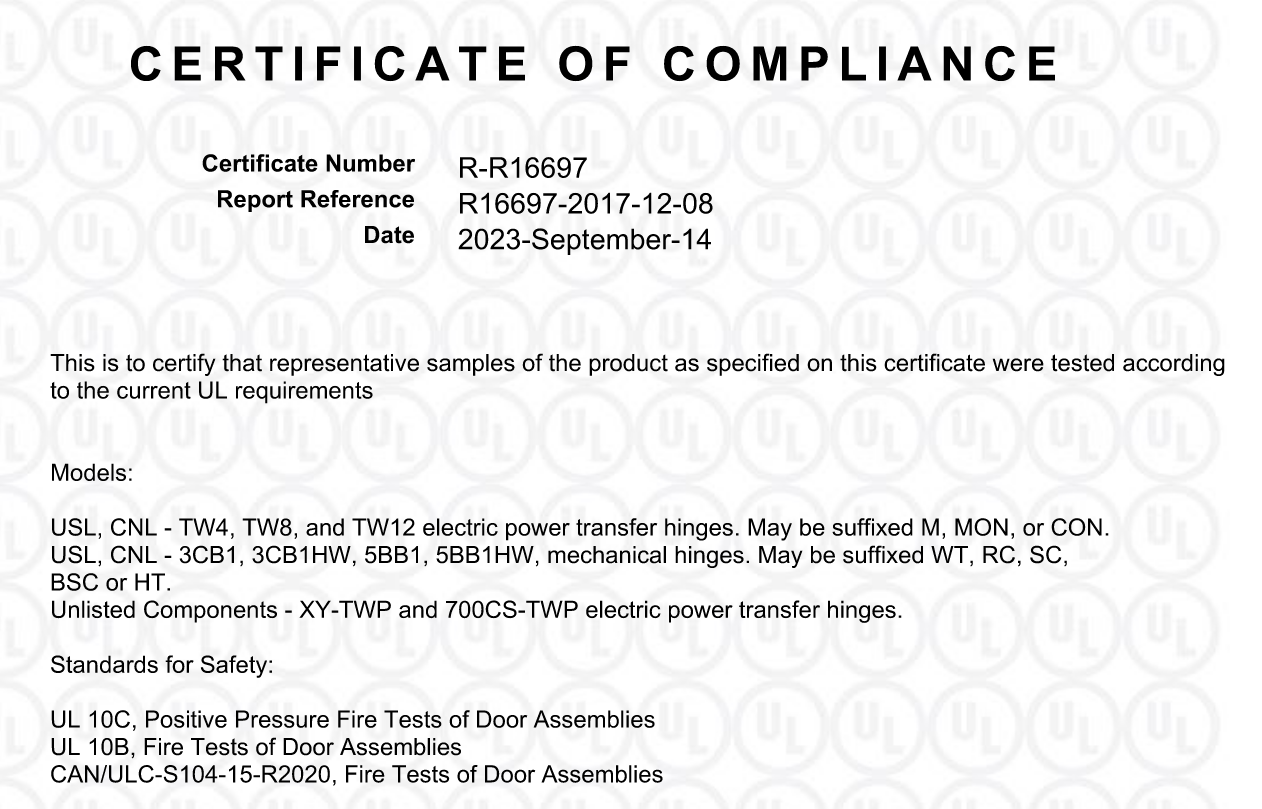
You need to login or register to bookmark/favorite this content.

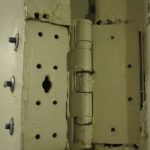

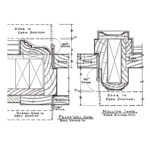
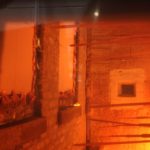


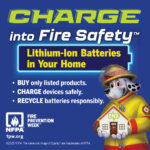
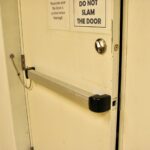
Thanks a lot, Lori for this information. Most people argue, at least in the Middle East that the hinges should have a UL and fire rating mark stamped on the hinge. This was after most Far East manufacturers started putting UL and fire rating marks on the hinges.